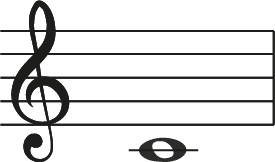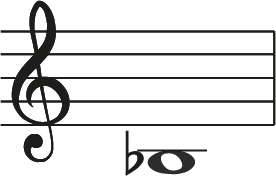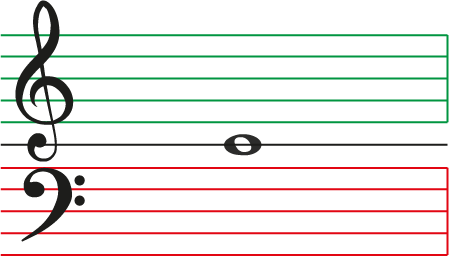Being able to transpose music is a requirement for all levels of the ABRSM Theory exams. Completing your ABRSM Grade 5 theory is necessary for any musician to complete their ABRSM Grade 6 practical exam and above. However, this Is not the only reason you should learn to transpose…
Why Learn To transpose Music?
You may have heard your instrument being called ‘Clarinet in Bb’ or ‘Alto Saxophone in Eb’ etc. But what exactly does this mean? This just means that when the clarinet plays a C it’s sounding note is actually B flat. Any instrument whose music is notated at a different pitch to what it actually sounds is what we call a transposing instrument.
We need to learn how to transpose so we understand our instruments, understand the players around us and also know how to correctly notate and compose music for these instruments.
Below is an example of what a Clarinet in Bb player will see on their music and what we as listeners will actually hear.


But why do we have transposing instruments? Why can’t they all just be in the key of C?
The main reason for instruments being in different keys is to facilitate the ease of swapping between them. For example, in the saxophone family we have the soprano, alto, tenor and baritone, to name but a few. Due to each instrument being made in a different key, it means that the player can use the same fingering for every instrument, even though the sounding pitches will be different.
For example:
Soprano Saxophone– This saxophone is in the key of Bb. Therefore, if you were to finger a C, the sounding pitch would be a Bb.
Alto Saxophone – This saxophone is in the key of Eb. Again, if you were to play a C, the sounding pitch would be an Eb!
Get the idea?
This all sounds very complicated… where should I start?
Before we can work up to transposing between different keys, we need to fully understand how notes can we written using different clefs.
The best place to start when learning to transpose is to first practice taking notes from the treble clef and writing them in the bass clef and vice versa. Understanding how to do this will give us a good understanding of ledger lines and where the notes sit on the stave.
To talk about this we must first talk about the Grand Stave.
The Grand stave is simply a treble clef stave on top and a bass clef stave at the bottom.

Notice how when we draw the two staves like this, there is only one extra ledger line?
What note is this?
You guessed it! Middle C!
Now we understand the Grand Stave; we can begin to understand how to move our notes between the treble and bass clef; with a focus on when we have one without the other.
For example, if we want to write the B below middle C, this is how it would look on the Grand Stave and then in both of the clefs.

Let’s try one more, what about the E above middle C?

Isn’t it amazing how you can write the same note in these different clefs and whichever clef you use to play it in, the note will sound the same!
We have looked at what transposition is and why it is important. We have also looked at the first step in learning to transpose: writing the same note in different clefs, whilst keeping the same pitch. Next week I’ll show you how to do the same thing but using the Alto and Tenor Clefs!
To find my other blog posts click here!
